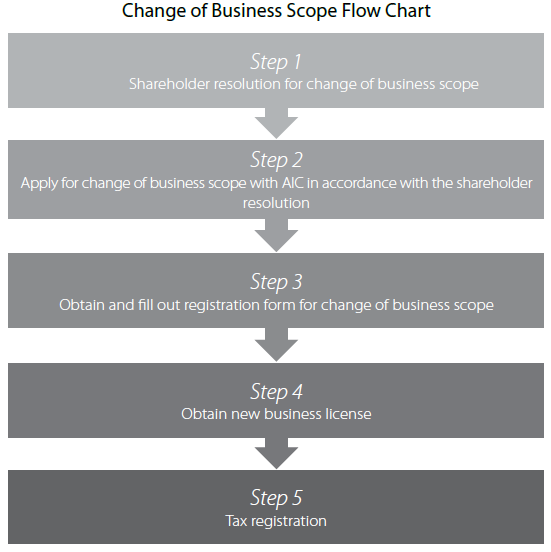Adapting Your China-Based Manufacturer to Meet the Country’s Evolving Manufacturing Needs
SHANGHAI – As low-cost production moves away from China, and other Asian nations become efficient at mass manufacturing, healthy economic growth require that China create higher-skilled manufacturing jobs, become more innovative and develop high-tech production. China’s Twelfth Five-Year Plan has indicated a shift in emphasis towards infrastructure and high tech industries, and policy makers have set a target of nine percent annual growth in the production of more sophisticated goods. In fact, sixty percent of China’s exports are now medium- or high-tech goods, a substantial increase from less than 40 percent not ten years ago, according to Bloomberg Businessweek.
The Central Government expects companies that remain in China to help manage the shift from mere assembly to advanced manufacturing. Some companies, for example, have adjusted their global manufacturing network by shifting more sophisticated production from their home country to China, while moving their original China operations to countries with cheaper labor costs.
China’s domestic consumer market is growing. In addition to making a shift towards more high-tech products, existing China-based manufacturing facilities will need to evolve a different set of skills, most notably in supply chain management, distribution, warehousing and marketing for new regional China markets. With Chinese labor becoming more expensive and the Asian infrastructure gap narrowing, foreign investors wishing to sell product onto the China market must begin comparing the economic costs of manufacturing in China with those of placing that capacity elsewhere in Asia, and using the China-ASEAN FTA to avoid import duties.
In other words, the China facility will become not just a manufacturer, but also a facilitator. This will mean a change of focus, in addition to modification to one’s business scope to take advantage of the new China consumer dynamic. In sum, rather than perceiving China simply as a low-cost export platform, foreign manufacturers need to view their businesses in a comprehensive light. With China’s increasing customer base and pool of skilled talent, investors are required to brainstorm more sophisticated business models for a more diversified business environment.
RELATED: A New Line of Work: Changing the Business Scope of a Company in China
Expanding the Business Scope of a Manufacturing WFOE to Include Distribution
In view of the changing business and investment landscape in China, the country can no longer be viewed simply as a place for manufacturing export goods. Foreign investors need to adapt their presence here to serve China’s domestic consumer market. To engage in distribution, an existing manufacturing wholly foreign-owned enterprise (WFOE) will need to expand its business scope. Adding distribution into its business scope means that the WFOE will be able to import goods to China to sell directly, either in wholesale or retail; as well as establish a fully operational China sales and after sales platform.
To do so, the WFOE should amend its articles of association, fill out the relevant application forms, and submit them in accordance with the legal procedures for expanding an enterprise’s business scope. The specific method of distribution (i.e., wholesale, retail or commission agency) should be specified, and a list of the relevant products should be attached. Methods of distribution are differentiated between:
- Retailing: i.e., selling goods from fixed venues or via television, telephone, mail order, internet, or vending machines, and related services.
- Wholesaling: i.e., selling goods to retailers and industrial, commercial or other customers and other wholesalers, and related services.
- Franchising: i.e., authorizing the use of trademarks, trade names and operation models for remuneration or franchise fees on a contractual basis.
- Commission agency activities: i.e., acting as a sales agent, broker or auctioneer for goods, or as a wholesaler charging fees and conducting sales for others’ goods and related services on a contractual basis.
China requires that each business have a well-defined business scope that must be strictly abided by. If a company wishes to engage in a business activity not specified in its business scope, such as distribution or logistics, it should go through the formality of changing/expanding its business scope. The key departments involved are the Administration of Industry and Commerce and the State and local tax bureaus. Required application documents include:
- Application form for registration of change to company registered info
- Business license (original and duplicate)
- Tax registration certificate (original and duplicate)
- Organization Code Certificate (original and duplicate)
- Company stamps
- Revised articles of association

 This article is an excerpt from the July-August 2014 edition of China Briefing Magazine, titled “Adapting Your China WFOE to Service China’s Consumer.” In this issue, we look at the challenges posed to manufacturers amidst China’s rising labor costs and stricter environmental regulations. Manufacturing WFOEs in China should adapt by expanding their business scope to include distribution and determine suitable supply chain solutions. In this regard, we will take a look at the opportunities in China’s domestic consumer market and forecast the sectors that are set to boom in the coming years.
This article is an excerpt from the July-August 2014 edition of China Briefing Magazine, titled “Adapting Your China WFOE to Service China’s Consumer.” In this issue, we look at the challenges posed to manufacturers amidst China’s rising labor costs and stricter environmental regulations. Manufacturing WFOEs in China should adapt by expanding their business scope to include distribution and determine suitable supply chain solutions. In this regard, we will take a look at the opportunities in China’s domestic consumer market and forecast the sectors that are set to boom in the coming years.
Asia Briefing Ltd. is a subsidiary of Dezan Shira & Associates. Dezan Shira is a specialist foreign direct investment practice, providing corporate establishment, business advisory, tax advisory and compliance, accounting, payroll, due diligence and financial review services to multinationals investing in China, Hong Kong, India, Vietnam, Singapore and the rest of ASEAN. For further information, please email china@dezshira.com or visit www.dezshira.com.
Stay up to date with the latest business and investment trends in Asia by subscribing to our complimentary update service featuring news, commentary and regulatory insight.
Related Reading
 Using China WFOEs in the Service and Manufacturing Industries
Using China WFOEs in the Service and Manufacturing Industries
In this issue of China Briefing Magazine, we provide a detailed overview of the WFOE establishment procedures as well as outline the typical costs associated with running these entities in China. We hope that this information will give foreign investors contemplating entry into the Chinese market a better understanding of the time and costs involved.
 Industry Specific Licenses and Certifications in China
Industry Specific Licenses and Certifications in China
In this issue of China Briefing, we provide an overview of the licensing schemes for industrial products; food production, distribution and catering services; and advertising. We also introduce two important types of certification in China: the CCC and the China Energy Label (CEL). This issue will provide you with an understanding of the requirements for selling your products or services in China.
- Previous Article Shanghai Raises the Stakes to Attract Multinational Headquarters
- Next Article China Regulatory Brief: RQFII Expansion & Bilateral Currency Swap Agreement



























